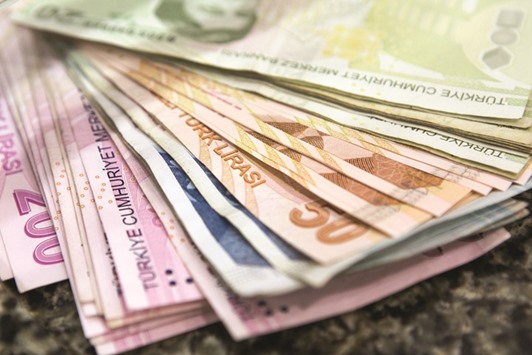For option traders, the lira is headed for a period of calm. Contracts that measure expected swings in the currency over the next month retreated the most across emerging markets in 2016 to the lowest level since December 2014, a sign of growing confidence in Turkey’s economy. The drop is a boost for carry traders, who buy higher yielding assets by borrowing in lower yielding currencies, as it reduces the cost of protecting against price fluctuations and increases the lure of Turkish markets.
The decline in one-month implied volatility comes amid slowing Turkish inflation and renewed appetite for emerging-market assets, spurred by stimulus packages and speculation the Federal Reserve will raise rates gradually. It’s also a sign traders are becoming more comfortable taking on lira risk even as policy makers start to simplify monetary policy and as central bank governor Erdem Basci’sterm expires. The central bank last month lowered borrowing costs for the first time in more than a year.
“There is a new resilience for the lira,” said Guillaume Tresca, a currency strategist at Credit Agricole SA in Paris. “Global sentiment is improving, there is a kind of market fatigue about all the Turkish events and so investors are more comfortable to buy lira assets to benefit from the carry.”
Declining consumer prices should make investors more comfortable with the central bank’s strategy, he said. Foreigners bought a net $2.7bn of Turkish assets in the first quarter, the largest inflow for any start of the year since 2011, according to Bloomberg calculations from central bank data. Turkey’s Real Effective Exchange Rate, which measures a currency’s relative value by adjusting for inflation differentials between a country and its trading partners, was the strongest last month in about a year.
The markets’ optimism might be overstretched, according to Erkin Isik, a strategist at Turk Ekonomi Bankasi AS, who cited improving economic data from the US and risks surrounding this month’s possible change of central bank governor. “Prices are getting to levels that are no longer considered as cheap,” he said.
The one-month implied volatility on the lira fell to 9.5275% as of 3.46pm in Istanbul, prices compiled by Bloomberg show. The currency rose two straight quarters through March 31, the longest streak since 2014. It has strengthened about 3% against the dollar so far this year to 2.8287.

Turkish lira banknotes sit on the counter of a foreign currency exchange office in Istanbul. Contracts that measure expected swings in the currency over the next month retreated the most across emerging markets in 2016 to the lowest level since December 2014, a sign of growing confidence in Turkey’s economy.
